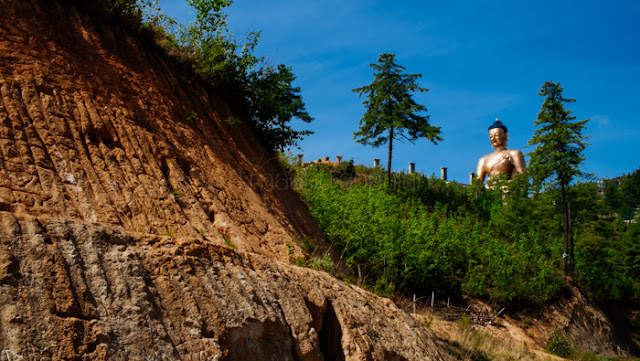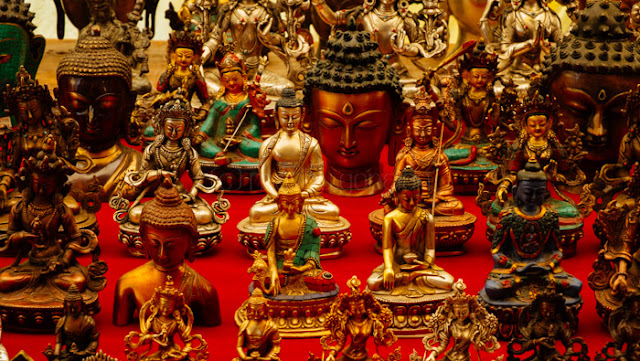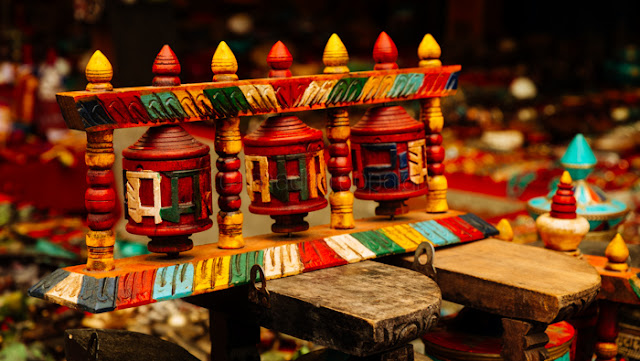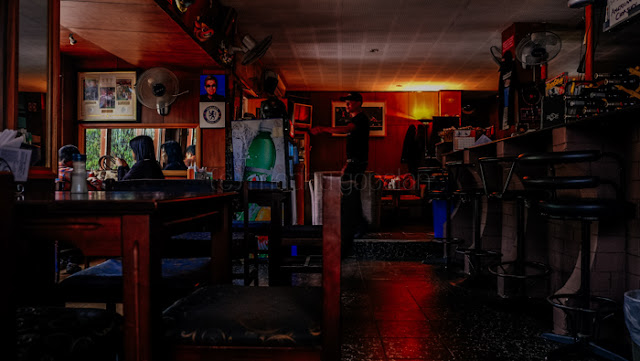 |
| The gorgeous Thimphu Valley |
The capital of Bhutan is Thimphu, about an hour's drive from Paro. Although it's a lot more urban than the rest of the country, it's very much a quaint and charming Bhutanese town. Here are a few of my favourite things from Thimphu :)
The Tachog Lhakhang on the Paro-Thimphu highway. After landing in
Paro, we drove down to Thimpu where we spent the first two days of our journey in Bhutan. On the way, we stopped at this historic temple built by
Bhutan's famous iron bridge builder back in the 15th century. He also built an iron link bridge leading to it. It was washed away however, and what you see now is a replica. A less shaky and more photogenic (IMO) bridge runs parallel to it, for cattle to cross without getting their feet stuck in the iron links:
 |
| A bridge to help cattle cross the river, lined with prayer flags |
 |
| The Wang Chhu river under the bridge |
Thimphu's main river is Wang Chhu, and you can see it in the above picture. This little river is no little river, actually - it flows through three countries (Bhutan, India, Bangladesh), and becomes a part of the Brahmaputra in Bangladesh.
Thimphu has two dzongs, both of them are magnificent in their own ways. The Tashichho Dzong is the seat of the Bhutanese government, and the Simtokha Dzong is Bhutan's oldest surviving dzong.
As I mentioned earlier, dzongs are like fortresses, but they also house a monastic section and the local district administration. Ngawang Namgyel, known as the Shabdrung or the unifier of Bhutan, brought the whole country under one rule for the first time, back in the 17th century. He is worshipped as a deity all over Bhutan and all of the dzongs that you see in Bhutan today, were built by him.
 |
| Tashichho Dzong |
 |
| Tashichho Dzong |
 |
| Murals in the Tashichho Dzong |
 |
| Murals in the Tashichho Dzong |
|
 |
| Simtokha Dzong |
The Buddha Dordenma or Buddha Point is probably Thimphu's highlight - it is a colossal statue of Lord Buddha that appears to magically rise out of the mountains! The statue is 51 meters tall, and you can see it from almost everywhere in Thimphu.
 |
| Buddha Dordenma |
 |
| Buddha Dordenma |
We did a bit of window shopping at a small handicrafts bazaar on the river bank, The prices vary wildly from stall to stall, so it's hard to know if you're getting a good deal!
 |
| Shopping for handicrafts in Thimphu |
 |
| Shopping for handicrafts in Thimphu |
People come to the old Changangkha Lhakhang (Temple) to get their little children blessed, and also to get lucky names picked out for their newborns. Or if they are like me, to check out the incredible view from the back of the temple.
 |
| Changangkha Lhakhang |
We went to the National Institute of Zorig Chusum to watch students learning Bhutan's traditional arts and crafts. There are 13 specific arts that the Bhutanese consider very important - together they are called Zorig Chusum. Below, is a painting class in progress:
 |
| School of arts and crafts |
 |
| School of arts and Crafts |
Thimphu has some really nice cafes and bars. If you drink beer, try the Druk and Red Panda beers - both are brewed locally in Bhutan.
 |
| Druk Beer |
 |
| A cozy cafe called The Zone |
These were just my favourites - there's a lot more to do in Thimphu, like the National Memorial Chorten, a cluster of lovely museums, the post office where you can get custom stamps printed with your face on them and the Takin zoo. After getting our fill of Thimphu, we drove eastwards past the picturesque Dochula Pass to remote
Phobjikha. A three hour drive from there took us to historic
Trongsa, from where we squeezed in a day trip to Bumthang. We then turned around, and headed westwards to warm
Punakha. Finally, we returned to
Paro, where we began our trip. This wraps up my series of posts about the towns that I visited, but I'm not done with Bhutan - there's more coming up :)
















